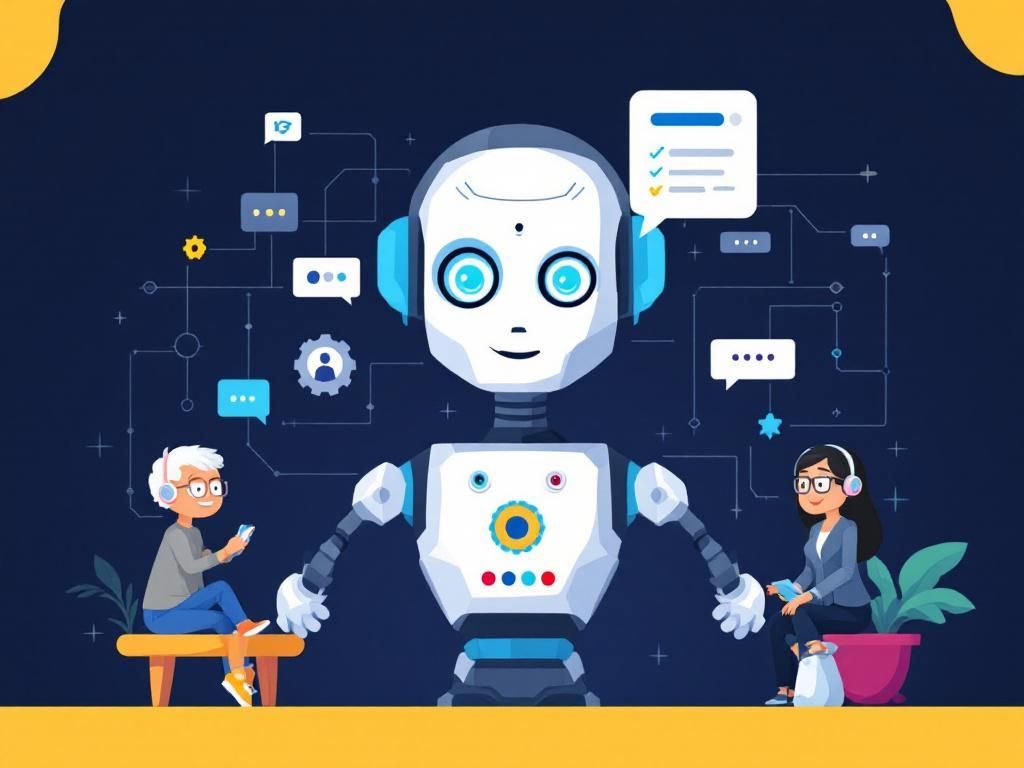In an increasingly globalized world, the demand for seamless communication across different languages is more critical than ever. As businesses expand their reach, the ability to effectively communicate with diverse audiences becomes a key competitive advantage. This is where AI translation APIs come into play, offering powerful tools that enable companies to integrate multilingual support into their software applications. In this article, we will explore some of the most promising AI translation APIs that are shaping the landscape for global Software as a Service (SaaS) solutions in 2025.
The Rise of AI Translation
Over the past few years, AI technology has significantly evolved, allowing for more accurate and context-aware translations. Traditional translation methods often fell short due to their inability to grasp nuances, idioms, and cultural references. The advent of AI-driven translation has changed that, offering solutions that leverage machine learning and natural language processing (NLP) to provide translations that are not only fast but also contextually relevant.
Key Features of AI Translation APIs
When evaluating AI translation APIs for SaaS applications, several critical features should be taken into account:
- Real-time Translation: The ability to translate text instantly, enabling seamless communication.
- Language Support: A wide variety of languages to cater to global audiences.
- Contextual Understanding: The capability to accurately translate idioms and phrases based on context.
- Customization Options: Ability to train the model on specific terminologies or industry jargon.
- Integration Ease: Simple API integration with existing software systems.
- Data Security: Robust measures to protect sensitive information during translation.
Top AI Translation APIs for 2025
Here are some of the leading AI translation APIs that are expected to dominate the market in 2025:
1. Google Cloud Translation API
Google’s Translation API has long been a favorite among developers, known for its extensive language support and powerful machine learning algorithms. Some key highlights of the Google Cloud Translation API include:
| Feature | Description |
|---|---|
| Languages Supported | Over 100 languages |
| Real-Time Translation | Yes |
| Customization | Supports glossaries for specific terms |
| Integration | Easy to implement with RESTful API |
2. Microsoft Translator Text API
Microsoft’s Translator API harnesses the power of AI to deliver high-quality translations. It is widely adopted in enterprise applications due to its reliability and integration capabilities. Key features include:
- Supports 80+ languages
- Customizable with Translator Hub for specialized terminology
- Real-time translation capabilities
- Integration with Microsoft Azure services
3. DeepL API
DeepL has gained popularity for its exceptional translation quality, often outperforming competitors in terms of accuracy. The DeepL API is particularly noted for:
- Support for 30 languages with continuous expansion
- Advanced machine learning algorithms for contextual translations
- An intuitive interface for easy integration into web apps
4. IBM Watson Language Translator
IBM’s Watson Language Translator is another robust solution, offering powerful AI capabilities. It is particularly strong in handling technical translations and provides:
- Support for 50+ languages
- Customizable translation models for specific industries
- Integration with IBM Cloud services
5. Amazon Translate
Amazon Translate is part of the AWS ecosystem, making it a great choice for businesses already leveraging Amazon services. Key aspects include:
| Feature | Description |
|---|---|
| Languages Supported | Over 70 languages |
| Real-Time Translation | Yes |
| Customization | Ability to create custom translation models |
Choosing the Right API for Your SaaS
Selecting the ideal AI translation API for your SaaS product requires careful consideration. Here are some factors to keep in mind:
1. Determine Your Needs
Assess your primary needs based on your target audience, the number of languages required, and the complexity of the content being translated. This will help narrow down your choices.
2. Evaluate API Performance
Look for reviews and case studies that showcase the accuracy and reliability of the translation APIs you are considering. Performance benchmarks can provide valuable insights.
3. Consider Cost
Each API has its own pricing model. Consider factors such as:
- Cost per character or word translated
- Monthly subscription fees
- Additional costs for customization
4. Review Integration Capabilities
The ease of integrating an API into your existing systems is crucial. Look for documentation, support, and community resources that can facilitate a smooth implementation.
The Future of AI Translation
As we look toward 2025, the future of AI translation is bright. With advancements in technology, we can expect:
- Increased accuracy and contextual understanding.
- Broader language support, including less commonly spoken languages.
- More robust customization options for industry-specific terminology.
- Enhanced security features to protect sensitive data.
In conclusion, harnessing the power of AI translation APIs is essential for businesses aiming to thrive in the global marketplace. By carefully selecting the right API and leveraging its capabilities, organizations can break language barriers and enhance their engagement with international audiences.
FAQ
What are the best AI translation APIs for SaaS in 2025?
Some of the top AI translation APIs for SaaS in 2025 include Google Cloud Translation API, Microsoft Translator Text API, Amazon Translate, IBM Watson Language Translator, and DeepL API.
How can AI translation APIs benefit global SaaS businesses?
AI translation APIs can help global SaaS businesses by enhancing communication, improving user experience, and enabling localization, which ultimately drives user engagement and expands market reach.
Are AI translation APIs accurate enough for professional use?
Yes, many AI translation APIs offer high levels of accuracy, but for sensitive or specialized content, human review is recommended to ensure the best quality.
What factors should I consider when choosing an AI translation API?
When choosing an AI translation API, consider factors such as language support, translation quality, integration capabilities, pricing, and the availability of additional features like glossaries or custom models.
Can AI translation APIs handle multiple languages simultaneously?
Yes, most AI translation APIs are designed to handle multiple languages simultaneously, making it easier for businesses to cater to diverse global audiences.
How does the pricing model work for AI translation APIs?
The pricing model for AI translation APIs typically works on a pay-as-you-go basis, charging per character or word translated, with some providers offering subscription plans for higher volumes of translation.




